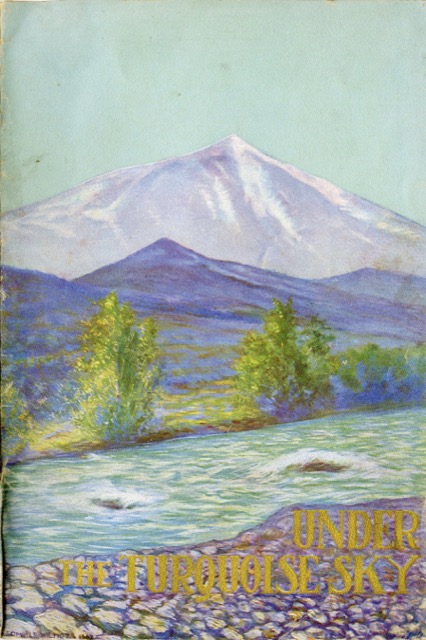We’ve seen 1924 and 1928 editions of the Rock Island’s “turquoise sky” booklets about Colorado. This one doesn’t have a clear date, but the cover art is dated 1902 and the booklet cites data from 1900 and 1901, so Rock Island probably published it in 1903.
 Click image to download a 22.3-MB PDF of this 68-page booklet.
Click image to download a 22.3-MB PDF of this 68-page booklet.
This edition has plenty of black-and-white photos, but most are small and the booklet relies more on text to sell the trip. Many of the photos show rail lines, all of which belonged to the Rio Grande, Colorado & Southern, or another non-Rock Island railroad. Since tourists had plenty of alternative ways of getting to Colorado–Burlington, Missouri Pacific, Rock Island, and Union Pacific–booklets like these may have done more to promote the Rio Grande and other Colorado roads than the railroads that issued them.

Henry P Phelps was a writer for various newspapers in Albany NY. He apparently took up travelogue writing in the 1890’s and was hired by several railroads, the Rock Island being one, to write travelogues/sales pamphlets. He has the typical writing style of the hack. He tries to cover up his lack of writing ability by flowery language, strange punctuation, and transposition of conjunctions to the ends of sentences instead of the beginning, where they belong. I had to reread a couple sentence three and four times and I still didn’t understand what he was trying to say. Maybe this writing style was appreciated in 1901 but, now that’s 2017, it’s just hard to read.
Regards, Jim